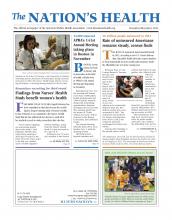Grabbing a good seat and getting to work on time may be top priorities when using mass transit. But whether you’re traveling by train, bus, streetcar or subway, following a few easy safety and health tips can help make your daily commute a smoother ride.
In 2011, Americans used public transportation to take more than 10 billion trips. In fact, each weekday, people board some type of public transportation 35 million times. And as with any other type of transportation — a motor vehicle, a bike or your own two legs — there is a safety risk in traveling from one destination to another that can often be prevented with some common-sense precautions. But first, what exactly is mass transit?
Mass transit is made up of large-scale public transportation systems and can include a variety of modes, such as buses, trains, cable cars, light rail and ferries. According to the American Public Transportation Association, public transit is becoming so popular that between 1995 and 2011 it experienced a greater growth rate in use than the nation’s highways. So if you’re among the millions who’ve decided to leave the car in the driveway in favor of mass transit, it’s still a good idea to make safety a regular traveling companion.

Photo courtesy iStockphoto: Couple on subway by Ferran Traite Soler
First, take the time to familiarize yourself with a transit system’s schedules and services, says Greg Hull, assistant vice president of public safety, operations and technical services at the American Public Transportation Association. Most transit systems offer online trip planning or have phone lines staffed by customer service representatives, Hull says. Also, be aware of where you’ll be waiting for mass transit to pick you up, such as an outdoor bus shelter, or where you’ll be dropped off, and prepare accordingly.
“For example, you might get dropped off in an environment that’s dimly lit at night,” Hull says. “These types of situations aren’t specific to transit, so you should take the normal personal safety precautions you’d take in any other open environment.”
Stay alert of your surroundings and watch where you’re going. For instance, while it’s easy to let our personal electronic gadgets distract us as we’re walking down the subway platform, make sure you don’t walk too close to the edge, Hull says. For people who are visually impaired, most train platforms use tactile flooring — such as tiles with bumps — to provide users with a nonvisual warning that they’re too close to the platform edge. Also, distracted riders in crowded environments are the perfect targets for pickpockets, so always keep your valuables in safe possession on your person, Hull advises.
Also, abide by everyday safety rules when waiting for buses or streetcars, such as looking both ways before crossing the street and obeying pedestrian walk signs.
Take a moment to locate the emergency call boxes on the train and platforms, which you can use to alert transit officials in case of an emergency.
“Anytime you feel that you or others are at risk, use that support device that’s available to you,” Hull says.
During flu season or disease outbreaks, Hull offers more common-sense advice: Wash and sanitize your hands often and sneeze or cough into a tissue or into your elbow.
Using mass transit isn’t only convenient, it’s also an easy way to incorporate regular physical activity into your daily routine.
“One of the most sedentary activities we do as human beings is drive a car,” says David Goldberg, communications director at Transportation for America, an organization working to improve the nation’s transportation system. “But it’s pretty difficult to use public transit without some physical exertion.”
Not only is walking to and from transit stops good for your physical health, bypassing the congestion and frustration of rush hour by jumping on the train is good for our mental health as well, Goldberg noted. Plus, fewer cars on the road can translate into less air pollution and irritation for people with respiratory diseases such as asthma.
“A lot of people are realizing that between walking, biking and transit, they can get (to) lots of places pretty cheaply and incorporate exercise into their lives pretty easily,” Goldberg says. “From a health perspective, there’s a lot in favor of public transportation.”
Pay attention during emergency situations
Transit systems have plans in place for emergencies and disasters and regularly hold emergency preparedness drills, Hull says. If a disaster happens when you’re on public transit, the “No. 1 thing to do is to listen for instructions from transit officials,” Hull advises.
Also, take some time during your daily commute to read about the emergency and evacuation procedures that are often posted inside mass transit vehicles.
- Copyright The Nation’s Health, American Public Health Association









